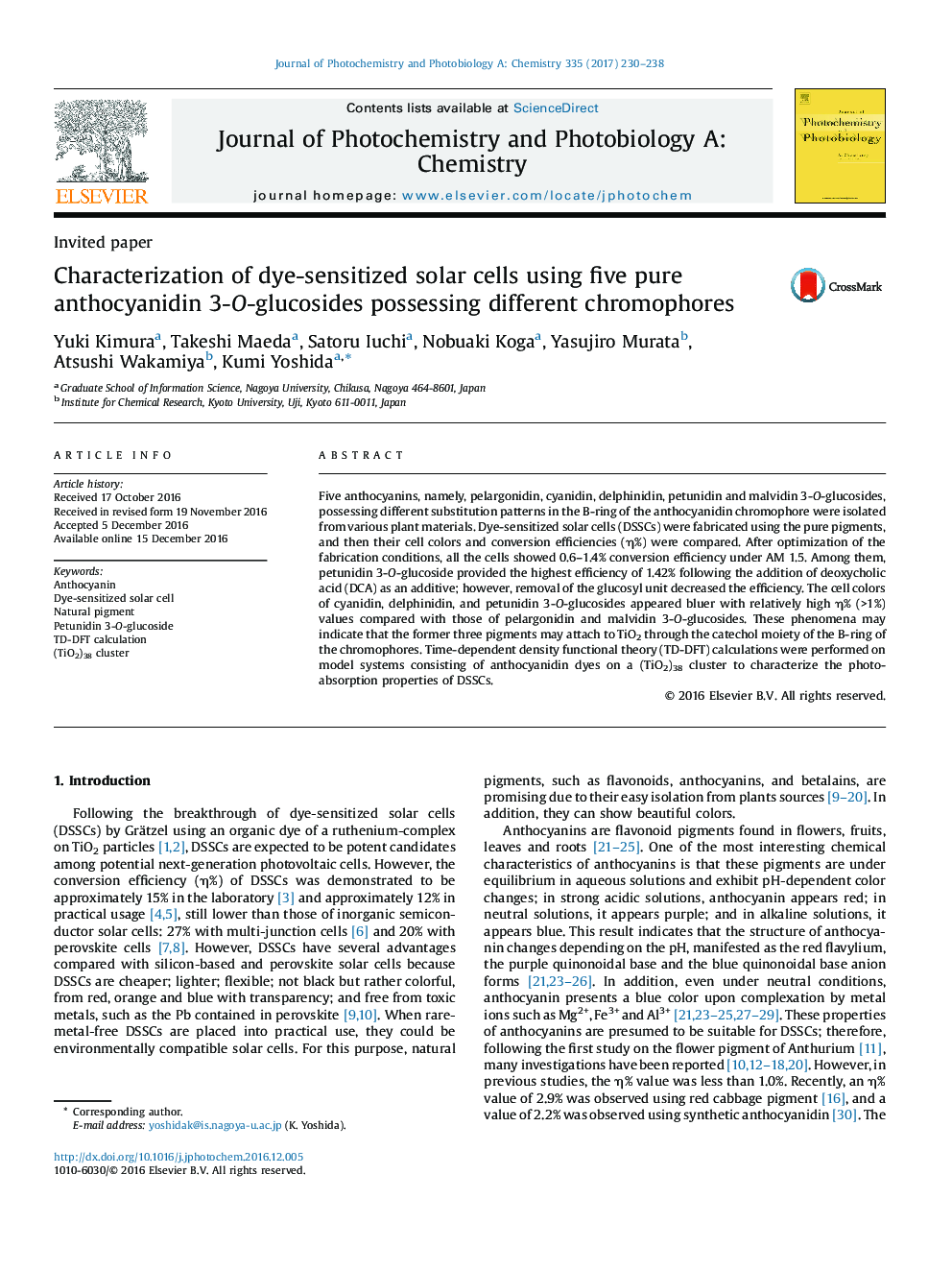| Article ID | Journal | Published Year | Pages | File Type |
|---|---|---|---|---|
| 4754136 | Journal of Photochemistry and Photobiology A: Chemistry | 2017 | 9 Pages |
â¢DSSCs using five pure anthocyanidin 3-O-glucosides were prepared and characterized.â¢All the anthocyanins gave beautiful purple to blue color cells.â¢Petunidin 3-O-glucoside exhibit the highest η (%) of 1.42% with DCA without TBP.â¢TD-DFT calculations of anthocyanidin dyes on a (TiO2)38 cluster were performed.â¢Both indirect and direct electron injection mechanisms might co-exist.
Five anthocyanins, namely, pelargonidin, cyanidin, delphinidin, petunidin and malvidin 3-O-glucosides, possessing different substitution patterns in the B-ring of the anthocyanidin chromophore were isolated from various plant materials. Dye-sensitized solar cells (DSSCs) were fabricated using the pure pigments, and then their cell colors and conversion efficiencies (η%) were compared. After optimization of the fabrication conditions, all the cells showed 0.6-1.4% conversion efficiency under AM 1.5. Among them, petunidin 3-O-glucoside provided the highest efficiency of 1.42% following the addition of deoxycholic acid (DCA) as an additive; however, removal of the glucosyl unit decreased the efficiency. The cell colors of cyanidin, delphinidin, and petunidin 3-O-glucosides appeared bluer with relatively high η% (>1%) values compared with those of pelargonidin and malvidin 3-O-glucosides. These phenomena may indicate that the former three pigments may attach to TiO2 through the catechol moiety of the B-ring of the chromophores. Time-dependent density functional theory (TD-DFT) calculations were performed on model systems consisting of anthocyanidin dyes on a (TiO2)38 cluster to characterize the photo-absorption properties of DSSCs.
Graphical abstractDownload high-res image (212KB)Download full-size image
